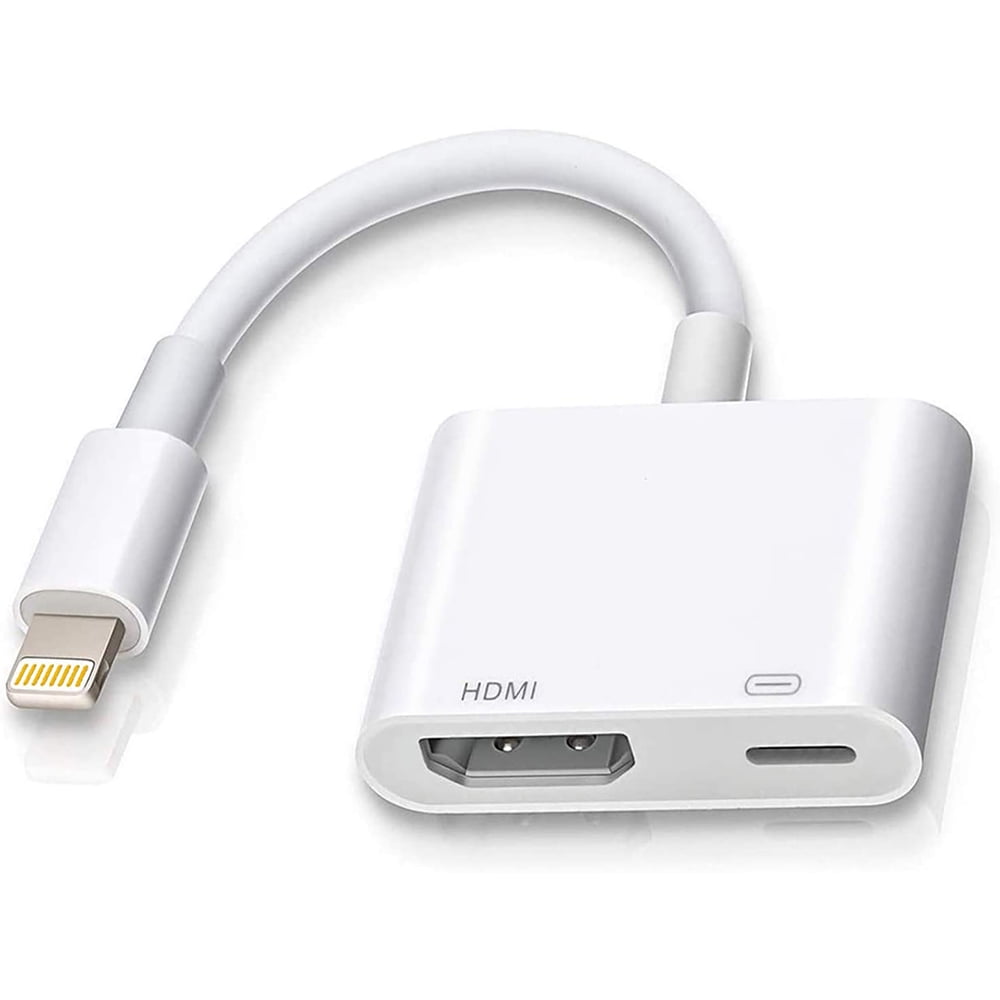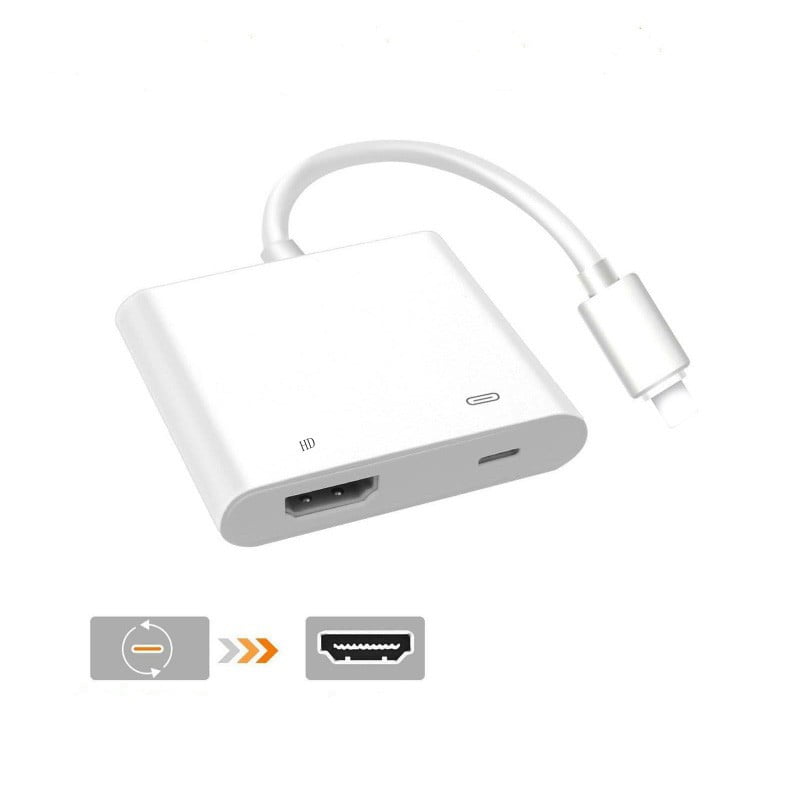

Lightning to hdmi adapter 1080p#
All of the heavy lifting is done with the adapter.Last week, we shared how the folks at Panic had pulled apart one of Apple's Lightning to HDMI digital AV adapters in an attempt to figure out why it didn't seem to output true 1080p HD video. By having the iPhone spit out a vanilla H.264 signal out of the Lightning connector, countless adapters can be made to work with existing phones instead of relying on the phone itself to support different specs (like HDMI itself). This accounts for all of the problems that Cabel ran into, and it seemingly has an understandable reason for existing in the first place. The SoC decodes the video, and handles the rest of the trip out to the end of the HDMI plug.
Lightning to hdmi adapter serial#
It then sends that compressed data out of the Lightning serial bus, and directly to the adapter. Under this explanation, the iPhone uses the same hardware H.264 encoding that it would use to send video wirelessly over AirPlay. Lightning isn’t capable of outputting an HDMI signal, so instead of adding complexity to each device, HDMI functionality was moved into the adapter. The commenter confirms that the SoC boots into Apple’s XNU kernel, but that’s as close as it gets to being iOS-like. The anonymous commenter gives plenty of detail, and hints heavily that he or she is an Apple engineer. Luckily, a comment on the original post provides interesting background to the ordeal. As cathartic as that may be, that didn’t provide much insight. The internet exploded with countless rage-posts about how Apple is screwing consumers. But why bother with this middle man at all? Well, we don’t have an official answer from Apple, but we have the next best thing: Wild conjecture and anonymous comments. Cabel theorizes that it is using the same compression used in AirPlay to stream out the video, and that would explain the lag and artifacting being introduced to the signal. In fact, it has a minuscule ARM SoC and it’s sporting upwards of 256MB of RAM. After taking a hacksaw to the tiny adapter, its apparent that this isn’t just a simple cable.
Lightning to hdmi adapter full#
Through his own testing, he discovered that using the old Dock Connector AV adapter will output a full 1920×1080 video mirroring signal, but the newer Lightning AV adapter tops out at 1600×900.

Now comes the search for truth amongst all of the internet rage this is kicking up among Apple enthusiasts.Ĭabel Sasser, a well known software developer at Panic Inc., brought this issue to light just a few days ago. Even worse, it seems that it is introducing noticeable compression artifacts (pictured below).
Unfortunately, it seems that this latest iteration of the device - designed to work with the new Lightning connector - isn’t putting out full 1080p. Obviously, a wired connection is what’s needed, right? If you want a crisp 1080p signal from your iPhone or iPad, the best bet is to plug it in directly using Apple’s own $49 Lightning digital AV adapter. Sending video from your phone or tablet to your TV is very useful, and many options exist for doing so wirelessly - though most existing solutions are highly compressed and quite laggy.


 0 kommentar(er)
0 kommentar(er)
